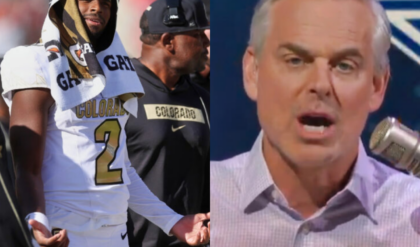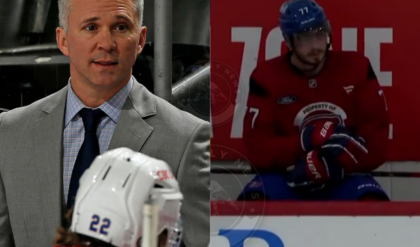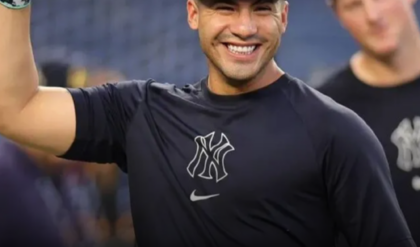Whatever Happened to Rock + Metal’s Class of 1984?
The year 1984 will always conjure up memories of Prince, Michael Jackson, Van Halen and Bruce Springsteen, but what about the bands and newly solo artists that were just starting out? What happened to them?
In this feature, we’ll take a look at the careers of the band and singers that were serving up their debut albums and see what happened to them. in the cases of Red Hot Chili Peppers and Bon Jovi, it was a best case scenario that ended up with a Rock Hall induction.
For others, such as Ratt, their first album was their biggest though they kept up a solid career. And then there are others who had one big moment in the spotlight in 1984 and largely fell off the map after.
Just for the fun of it, what ELSE was happening in 1984? Indiana Jones and the Temple of Doom, Ghostbusters, Karate Kid and Footloose dominated at the box office. The MTV Video Music Awards aired for the first time. Wendy’s wanted to know “Where’s the beef” in their commercials and Apple launched their Macintosh computer line with the famous “1984” TV ad.
Now that you’ve got those cultural touchtones, let’s take you back in time to 1984 and see what was happening with the year’s breakout rock and metal bands and how they would evolve beyond the year.
Whatever Happened to 1984’s Breakout Rock + Metal Bands?
They were starting in their various forms in 1984. Some had Rock Hall careers, others were hot for a moment.
Gallery Credit: Chad Childers, Loudwire

anthrax, 1984, whatever happened to anthrax
Paul Natkin, Getty Images
Anthrax
What Happened With Anthrax in 1984?
After forming in New York City in 1981, Anthrax provided the East Coast representation of what would become the “Big 4” of the ‘80s thrash metal movement. The lineup of Neil Turbin, Scott Ian, Dan Spitz, Danny Lilker and Charlie Benante first made their musical presence felt on 1984’s Fistful of Metal debut album through Megaforce.
The record is most known for “Metal Thrashing Mad” and “Deathrider.” But while it may have introduced the band, Fistful of Metal marked a period of transition for the group. Lilker was fired shortly after the album’s release and Turbin exited Anthrax as well when the group wrestled over creative control.
What Happened to Anthrax After 1984?
Bigger things were on the horizon for Anthrax, who found their footing with the arrivals of singer Joey Belladonna and bassist Frank Bello. Spreading the Disease and Among the Living are credited with being the focal points of the band’s ‘80s ascent and dominance.
A split with Belladonna in 1992 led to the entry of Armored Saint’s John Bush on vocals and the band continued through an era where the Sound of White Noise was their most successful set as their returns fell off.
Belladonna’s eventual return in the 2010s has been well received commercially with the Worship Music and For All Kings albums both hitting Top 20 in the U.S.

autograph, 1984, whatever happened to autograph
YouTube: Jamsonic1
Autograph
What Happened With Autograph in 1984?
There’s nothing like having a hot song and in 1984 Los Angeles rockers Autograph were on top of their world with the fist-pumping, sing-along anthem “Turn Up the Radio.”
It was the breakout track off their debut album, Sign In Please. The song helped to catapult the album to No. 29 on the Billboard 200 Album Chart and earned the group their first (and only) gold record in the U.S.
What Happened to Autograph After 1984?
The second single from Sign In Please, “Send Her To Me,” failed to generate any spark at rock radio and the band then moved on to working on their follow-up. The 1985 album That’s the Stuff debuted at No. 92 and the single “Blondes in Black Cars” was a minor rock radio hit, but the album got largely overlooked after its release.
A third album, Loud and Clear, was their last major label offering from RCA in 1987 and though four singles were issued, none made an impact at radio. After leaving RCA, the band worked toward a fourth album, but the exits of Steven Isham and Keni Richards during the process preceded the group eventually deciding to split in 1989.
In 1997, a reunited lineup of Steve Plunkett, Steve Lynch, Steven Isham, Keni Richards and Randy Rand issued the new album, Missing Pieces.
The group has continued to record while continued turnover in the lineup took place. Guitarist Randy Rand was the last classic-era member still going in 2022 on the Beyond album. But after Rand’s 2022 death, a court case ensued between Steve Lynch and three members of the current lineup over the band’s trademark and the ability to continue using the name.
Lynch eventually won the legal dispute, retaining the rights to the Autograph name.

bathory, 1984, whatever happened to bathory
YouTube: Bathory
Bathory
What Happened With Bathory in 1984?
Something dark this way comes! Swedish metallers Bathory arrived on the scene with their 1984 self-titled debut album and many consider them to be pioneers of the black metal movement that would follow in the years to come.
The self-titled debut came together quickly with leader Quorthon pulling in Stefan Larsson and Rickard Bergman to play after being asked to record a full album following initial success from a compilation appearance. The initial pressing of the album was limited to 1,000 copies that sold out in two weeks.
What Happened to Bathory After 1984?
Bathory recorded 12 studio albums in total between 1984 and 2003. Their earliest works were defined by heavy amounts of distortion, dark subject matter and raw sounding production. But over time, the band shifted away from their black metal leanings into something more resembling Viking Metal. That started on 1990’s Hammerheart album.
The group also leaned into their thrash metal influences for a period as well, before reclaiming the Viking Metal sounds on their final offerings.
The band’s career came to its conclusion in 2004 when leader Quorthon died of heart failure.

bon jovi, 1984, whatever happened to bon jovi
Paul Natkin, Getty Images
Bon Jovi
What Happened With Bon Jovi in 1984?
Having shopped the song “Runaway” around, the song got some attention locally in 1982 leading Jon Bon Jovi to form a band to support his music. By 1984, the first Bon Jovi album (self-titled) arrived with “Runaway” serving as the track to introduce the group to their first “million faces” and more.
Though “Runaway” would crack the Billboard Top 40, the follow-up songs “She Don’t Know Me” and “Burning for Love” failed to garner much traction.
The album peaked at No. 43, but has gone on to achieve platinum sales status.
What Happened to Bon Jovi After 1984?
It was not an overnight success story for Bon Jovi. Their second album, 7800° Fahrenheit, peaked at No. 37 but only saw the songs “In and Out of Love” and “Only Lonely” receive minor attention at rock radio.
It wasn’t until the third album that the band finally saw their giant leap forward on the Slippery When Wet album. “You Give Love a Bad Name,” “Livin’ on a Prayer” and “Wanted Dead or Alive” saw the sort of universal acclaim they’d been after.
They’d maintain rock radio dominance through their New Jersey and Keep the Faith albums, but have largely seen most of their success come in the pop world from the These Days album moving forward.
The band has had nine platinum albums, including the diamond-selling Slippery When Wet record. In 2018, they were inducted into the Rock and Roll Hall of Fame.

the cult, 1984, whatever happened to the cult
Erica Echenberg/Redferns, Getty Images
The Cult
What Happened With The Cult in 1984?
The Cult saw their earliest successes mostly happening in the U.K. (save for some college rock stations stateside). They first arrived on the scene with 1984’s Dreamtime album, which showed the promise of the future works in crafting a darkly psychedelic sound that was accentuated by the powerful vocals of lead singer Ian Astbury.
Lead single “Spiritwalker” was a chart-topping indie hit in the U.K., while “Go West” would eventually garner the most attention from fans off the album.
What Happened to The Cult After 1984?
It was a steady evolution for The Cult who continued to garner more attention by the album. The 1985 set Love saw the arrival of their biggest song to date, “She Sells Sanctuary,” which started to get some attention from U.S. radio as well.
The 1987 album, Electric, spawned another college rock hit in “Love Removal Machine.” And by the time 1989’s Sonic Temple arrived, they were hitting both the Alternative and Mainstream Rock Top 10 with “Fire Woman.”
After their 1995 split, the band reunited in 1999. A new album, Beyond Good and Evil was released, but another hiatus followed in late 2002.
A second reunion followed in 2006 and the group has remained active ever since.
They’ve released four more studio albums, but most of the material has been overlooked with only 2007’s “Dirty Little Rockstar” getting a sniff at Mainstream Rock radio.

honeymoon suite, 1984, whatever happened to honeymoon suite
Michael Ochs Archives, Getty Images
Honeymoon Suite
What Happened With Honeymoon Suite in 1984?
After forming in 1981, Canadian rockers Honeymoon Suite underwent several lineup changes before settling on the core that would record their self-titled debut album that arrived in 1984.
The band released four big singles in their native Canada, but “New Girl Now” was the one of the four that found the greatest traction in the U.S. The song hit No. 7 on the Mainstream Rock chart and the album peaked at No. 60.
What Happened to Honeymoon Suite After 1984?
The band continued to thrive in Canada with some moments of success in the U.S. during the ‘80s as well. “Feel It Again” hit No. 34 on the Billboard Hot 100 in early 1986, while the follow-up power ballad “What Does It Take?” also received some rock radio play while being featured in the ‘80s John Cusack / Demi Moore film One Crazy Summer.
Success started to wane in the early ‘90s and lineup changes continued, but aside from a 1995 live album, the band had a lengthy layoff until returning to recording with 2001’s Lemon Tongue album.
Two more albums would follow in the 2000s before another lengthy recording layoff. Two singles were released in 2019 and 2020 before the band’s finally ended a 16-year album drought with 2024’s Alive.

steve perry, 1984, whatever happened to steve perry
Gary Gershoff, Getty Images
Steve Perry
What Happened With Steve Perry in 1984?
At the height of Journey’s ‘80s success, singer Steve Perry ventured out for his first solo album. Street Talk became an instant smash. The album featured the single “Oh Sherrie” inspired by Perry’s then girlfriend Sherrie Swafford who also appeared in the song’s video.
In total, five singles came from the album. “She’s Mine” and “Strung Out” both were Top 20 singles at Mainstream Rock radio, while the ballad “Foolish Heart” hit No. 18 on the Billboard Hot 100. The album peaked at No. 12 on the Billboard 200 Album chart and was certified double platinum.
What Happened to Steve Perry After 1984?
With Journey still thriving, the singer returned to the group after the success of his solo album. But during the recording of 1987’s Raised on Radio album, Perry was balancing singing and producing while looking after his ailing mother who eventually passed during the making of the record. After the support tour, the group announced their hiatus which lasted until a 1996 reunion.
As for Perry’s solo work, he began and aborted a solo album in 1988. But for the most part after the hiatus was announced Perry took a lengthy break from music. He returned in 1994 with the solo set For the Love of Strange Medicine. It didn’t match the success of the singer’s solo predecessor, but did yield another Top 10 Mainstream Rock radio single in “You Better Wait.”
Perry resurrected five songs from that 1988 album to include on his 1998 solo greatest hits album and then mostly stepped away from music again aside from the occasional guest appearance or collaboration.
In 2018, Perry issued his official third studio album with Traces and has since followed in 2019 and 2021 with a holiday-themed EP and album.

queensryche, 1984, whatever happened to queensryche
Ross Marino, Getty Images
Queensryche
What Happened With Queensryche in 1984?
Hailing from the state of Washington, Queensryche debuted with their 1984 album The Warning. The record had been partially inspired by George Orwell’s famous novel 1984 and it’s an album that shows the promise of what was to come for the group. Though leaning more metal than progressive at this point, the album does offer a glimpse at the songwriting and knack for arrangements that would become stronger on future efforts.
The album peaked at No. 61 on the Billboard 200 Album Chart and has been certified gold for sales.
What Happened to Queensryche After 1984?
The group broke free of their early traditional metal trappings and began to embrace the progressive side of their sound. The 1986 album Rage for Order took a solid step forward before the band issued their masterpiece, Operation: Mindcrime as their third album in 1988.
Queensryche garnered rare mainstream attention with 1990’s Empire due in large part to their sweeping ballad “Silent Lucidity,” but that wasn’t the only hit song as rock radio also embraced “Jet City Woman,” “Another Rainy Night” and “Anybody Listening?” in what was their biggest commercial breakthrough. The album has been certified triple-platinum and is their biggest seller.
Promised Land, Hear in the Now Frontier and Q2K saw steady drops in sales and by the 2000s they had mostly fallen out of airplay at rock radio as well.
In 2012, the band fired Geoff Tate’s wife who had been their manager and his stepdaughter who had been running their fanclub. That led to an altercation during touring between Tate and the band members, who then sought to remove him from the group as well and a lawsuit between the two sides followed.
Tate won the rights to perform the group’s Operation: Mindcrime album while the remaining members could still tour as Queensryche with Todd La Torre taking over on vocals. Four albums have been issued during the La Torre tenure. The 2013 self-titled record fared the best peaking at No. 23.

ratt, 1984, whatever happened to ratt?
Paul Natkin, Getty Images
Ratt
What Happened With Ratt in 1984?
Having played around Hollywood as Mickey Ratt since the mid-’70s, the group eventually shortened their name to Ratt in 1981. After an independent EP garnered the attention of Atlantic Records, the group recorded their debut full-length album as Ratt in 1984.
Out of the Cellar got off to a strong start due in part to the single “Round and Round,” which also had a popular video featuring legendary comedian Milton Berle in multiple roles. “Round and Round” hit No. 4 Mainstream Rock and cracked the Billboard Hot 100 at No. 12. The album also generated the singles “Back for More” and “Wanted Man” that had more modest returns. The album reached triple platinum status.
What Happened to Ratt After 1984?
Out of the Cellar remains their biggest seller, but each of Ratt’s ‘80s album achieved platinum status. The band enjoyed a steady run of rock radio hits with “Lay It Down,” “You’re in Love,” “Way Cool Jr.” and “Lovin’ You’s a Dirty Job” among their bigger songs.
After 1990’s Detonator album, the band started to splinter off into various other projects and would never reunite as the core five again. In 2002, guitarist Robbin Crosby died at the age of 42.
In the years since, there have been various lineups of the band continuing the Ratt legacy. A new album was even released in 2010. But when drummer Bobby Blotzer became the lone active member from Ratt’s peak era in 2015, he attempted to claim the name for touring and ended up in a legal battle with the other bandmates from that era.
Stephen Pearcy, Warren DeMartini and Juan Croucier reclaimed the name, but Ratt has not recorded any more music and Pearcy stated in 2022 that any further reunion activity was “not gonna happen.”

red hot chili peppers, 1984, whatever happened to red hot chili peppers
Randy Bachman, Getty Images
Red Hot Chili Peppers
What Happened With Red Hot Chili Peppers in 1984?
There wasn’t anyone quite like Red Hot Chili Peppers in 1984. Their fascination with funk and the nimble-tongued vocals of singer Anthony Kiedis provided a rather distinctive sound. Gang of Four’s Andy Gill produced the group’s self-titled debut album.
Though the album failed to chart, songs such as “Out in L.A.,” “True Men Don’t Kill Coyotes,” “Get Up and Jump” and “Police Helicopter” managed to garner attention from MTV and college rock radio that helped to build their fanbase.
What Happened to Red Hot Chili Peppers After 1984?
Here’s another case of a now hugely successful band that took a while before they made their breakthrough. Though 1985’s Freaky Styley and 1987’s Uplift Mofo Party Plan continued to grow the audience at college rock radio, it wasn’t until 1989’s Mother’s Milk that featured the additions of Chad Smith and John Frusciante to the band that they found their breakout hit with a funky cover of Stevie Wonder’s “Higher Ground.”
While that was the song that opened the door, they absolutely knocked that door to the ground with 1991’s Blood Sugar Sex Magik that featured major rock radio hits with “Give It Away” and “Under the Bridge,” as well as “Suck My Kiss” and “Breaking the Girl.”
From there, they never looked back. “Soul to Squeeze,” “My Friends,” “Love Rollercoaster,” “Scar Tissue,” “Otherside,” “Californication,” “By the Way,” “Can’t Stop,” “Dani California,” “Tell Me Baby,” “The Adventures of Rain Dance Maggie,” “Dark Necessities” and “Black Sunshine” are just a few of their big radio hits that inevitably got them into the Rock and Roll Hall of Fame in 2012.
Californication is their biggest album with an eight times platinum certification in the U.S.

steve vai, 1984, whatever happened to steve vai
Clayton Call / Redferns, Getty Images
Steve Vai
What Happened With Steve Vai in 1984?
Having spent time with Frank Zappa’s backing band in the early ‘80s, emerging guitar great Steve Vai recorded his debut solo album, Flex-Able, for release in 1984. The album is notable for its inclusion of “The Attitude Song,” the most-performed track in Vai’s history.
What Happened to Steve Vai After 1984?
Though Vai was establishing his solo career, the guitarist played on an Alcatrazz album and earned his highest profile gig as a member of David Lee Roth’s solo band in the ‘80s.
That full plate of projects kept him from his second solo album until 1990’s Passion and Warfare, which became his biggest seller.
At press time, Vai had 11 studio albums and he’s accumulated three Grammy wins in 11 tries.

w.a.s.p., 1984, whatever happened to w.a.s.p.?
Ross Marino, Getty Images
W.A.S.P.
What Happened With W.A.S.P. in 1984?
It was a great start for W.A.S.P., who had one of their biggest selling albums with 1984’s self-titled offering. Led by the single, “I Wanna Be Somebody,” the Blackie Lawless-led group quickly made a name for themselves in the metal world.
“School Daze” and “L.O.V.E. Machine” were also issued as singles in different territories around the world. The album is also notable for the song “Animal (Fuck Like a Beast)” being pulled from the record after their label bowed to pressure from the PMRC. It was eventually returned to the record with the 1998 reissue.
What Happened to W.A.S.P. After 1984?
Though there have been some lengthy delays between albums, W.A.S.P. have consistently released music with 16 studio records under their belt at press time. Their 1985 sophomore set, The Last Command, also fared well thanks to the single “Wild Child.”
Stateside, the band’s fourth album, The Headless Children, charted the highest with a No. 48 peak position.

roger waters, 1984, whatever happened to roger waters
Paul Natkin, Getty Images
Roger Waters
What Happened With Roger Waters in 1984?
Having just completed The Final Cut with Pink Floyd, Roger Waters opted to make his first solo album. The Pros and Cons of Hitch Hiking arrived in 1984. The seeds of the album dated back to 1977 and Waters decided the time was right to pursue this conceptual record that followed the tale of a man’s midlife crisis after committing adultery with someone he picked up from the side of the road.
The album peaked at No. 31 on the Billboard 200 Album Chart. The title track and “Every Stranger’s Eyes” were both issued as singles. The title track hit No. 17 on Mainstream Rock radio.
What Happened to Roger Waters After 1984?
After tensions in Pink Floyd during The Final Cut, Waters left the group in 1985 and sought to legally keep his bandmates from continuing under the band name without him.
In 1987, a settlement was reached that would allow Pink Floyd to continue while Waters retained the rights to The Wall album concept and the famous Animals pig. He’s made great use of having The Wall rights, revisiting the album live as audiences have flocked to the live production.
In the time since, Waters has primarily retained his solo status though he did reunite with his Pink Floyd bandmates for a performance at the Live 8 benefit concert in 2005.
He’s issued seven solo albums, The 2017 album, Is This the Life We Really Want? charted the highest at No. 11 in the U.S.





